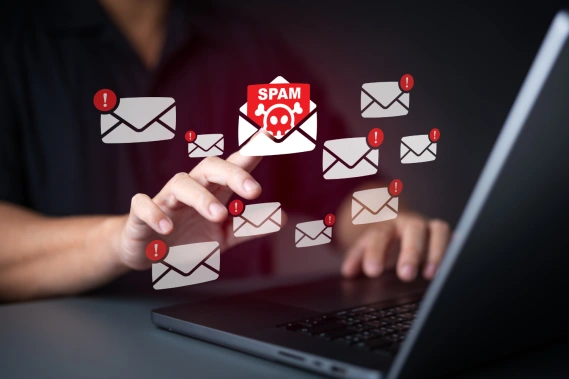Would you ever send a marketing email again if you knew it’d just end up in the spam folder?
Any business owner’s answer would most likely be a hard no.
But if you’re not staying up on the best practices and doing routine check-ins on the health of your email marketing, you’re spending valuable time on collateral that will land in spam instead of inboxes.
So, if your emails aren’t performing the way you’d like, now is the time to act. Keep reading for important tips that can help ensure your email marketing strategy is airtight before it’s time for Q4 promotions.
Common Reasons Emails Miss the Inbox
There are a lot of reasons marketing emails go straight to spam, but most of these misplaced emails can be attributed to:
- Spam trigger words and poor subject lines: Emails can get flagged by Email Service Providers (ESPs) when they include language linked to spam. Think overly “salesy” phrases, excessive punctuation, or misleading claims.
- Low engagement history (cold lists, inactive subscribers): Sending to a list of unengaged contacts signals to ESPs that your content isn’t relevant, hurting your deliverability.
- Unverified sending domain or bad sender reputation: With Google and Yahoo’s updated standards, sending from an unverified domain is almost guaranteed to cause issues. Likewise, a poor sender reputation means you’ll need to rebuild trust before hitting the inbox consistently.
- Inconsistent sending schedule: Irregular email activity can look suspicious to ESPs. A steady cadence shows you’re a legitimate sender and keeps your audience engaged.
Four CRM System Features to Improve Email Deliverability
For every reason your emails might be landing in spam, there’s likely a CRM feature that can help fix it.
Below are the top four most helpful CRM features that can help you improve your sender reputation, clean up your list, and improve your deliverability rate.
Email authentication setup
Domain-based Message Authentication, Reporting, and Conformance (DMARC) and Domain Keys Identified Mail (DKIM) records are used to verify that you're a legitimate sender. They’re essential to authenticating your email address. They act like a driver's license for your emails, telling ESPs that you're not a spammer.
It sounds technical and confusing at first, but your CRM can simplify the process of getting your DMARC and DKIM records sorted out.
Personalization & segmentation
If you're looking to improve your email metrics and engage your contact list, the process starts with sending more relevant emails.
A CRM system can help you do just that by allowing you to group contacts based on interests, behaviors, or purchase history. And when people get messages that feel tailored to them, they’re more likely to open and engage. This then signals to email providers that your messages belong in the inbox.
List hygiene tools
It's normal for email lists to need some cleaning up. In fact, over time, your lists will naturally collect inactive, invalid, and unengaged addresses. This is nothing a solid CRM can’t help clean up.
The right software will notify you of these emails so you can remove them, which will help you maintain an engaged list and avoid sending to contacts that could harm your sender reputation.
Reporting insights
The reporting features in your CRM system are useful for marketing insights of all kinds. You can even use reports to help you track when your contacts are most likely to open emails. Then, you can schedule sends for those windows.
Sending at the optimal time will help give your emails the best shot at being opened, helping boost your overall open rate.
Quick Fixes to Make Before Fall
Fall is approaching fast, and you’ll need your email strategy in top shape before you send out any promotions.
Prioritize the following four steps to ensure your campaigns reach your customers this upcoming season (and beyond):
- Clean up your list: Jumpstart the process by going through your email lists in your CRM software to remove unengaged contacts.
- Warm up your sending reputation: If you have a lot of promotions planned, start slowly ramping up your sending frequency now, so ESPs don’t flag future emails.
- Do a content audit: Go through your nurtures and any promotional emails you have planned to check for any copy that spam filters might flag.
- Check email data in your CRM system: Take a look at your email reports and try to spot negative trends you can address before launching your fall campaigns.
7 More Email Deliverability Tips
Improving email deliverability isn’t a one-and-done task — it’s an ongoing process. By using your CRM system’s features to authenticate your emails, clean up your list, and send the right message at the right time, you’ll set yourself up for better inbox placement and stronger results.
Want to go even deeper? Check out 7 Steps to Improve Email Deliverability for more tips to keep your emails performing their best.


